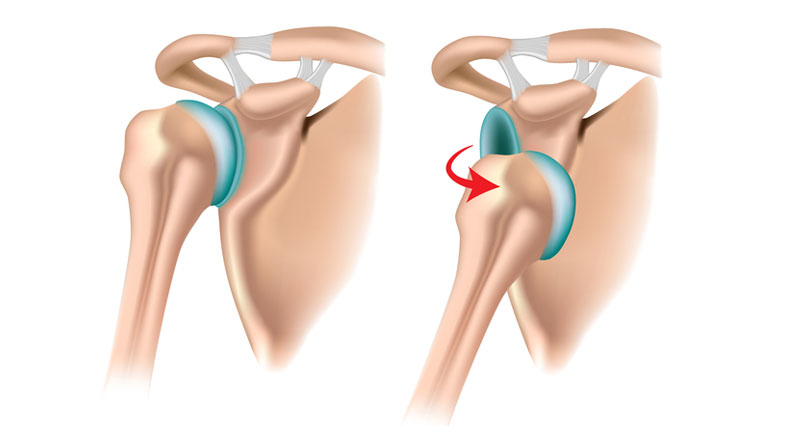What is a Shoulder Dislocation?
There are three types of shoulder dislocations, anterior, posterior, and inferior. The most common is anterior dislocation, which is when the head of the humerus moves forward in front of the glenoid (socket).

Posterior dislocations occur when the head of the humerus moves backwards behind the glenoid. Inferior dislocations are rare and occur when the humerus moves downwards below the glenoid.
Who is this program suitable for?
This program is suitable for anyone who has suffered a shoulder dislocation or partial dislocation (subluxation). Ideal for both beginner and elite-level athletes.
How does it work?
The app tells you exactly what to do each day (Today’s tasks) and records your progress to be reviewed later by yourself, or your coach/physio. Paul guides you through the program via a series of videos explaining each phase and the exercises and treatment methods involved.
The program is criteria-based, not time-based. You progress through the phases, only moving on to the next phase when you have reached specific exit criteria.
Program structure
The program consists of 4 phases with a 5th injury prevention/mitigation phase.
Phase 1
Phase 1 begins as soon as possible following the onset of symptoms. The plan is designed to decrease pain, improve strength and flexibility and improve knee control.
Phase 2
This phase is the isotonic phase where we aim to load your knee more with exercises involving movement.
Phase 3
The aim of phase 3 is to further increase the load through the knee and begin to introduce plyometric exercises while increasing the running load if applicable.
Phase 4
Maintain strength and go from double to single-leg plyometrics.
Phase 5
Replicate the training demands of your sport.
What is included?
The program consists of treatment and healing for a dislocated shoulder, stretching & mobility to aid in the recovery, strengthening to rebuild the affected area, activation, movement control and functional exercises specific to the injury, as well as cardiovascular workouts to maintain fitness whilst you recover.
Treatment & Healing
This covers how and when to apply treatment such as cold therapy & compression, heat, massage, and taping.
Exercises
Over 60 different exercises with video demonstrations covering mobility & stretching, activation, strengthening, motion control/proprioception, and functional.
Priority support
If you have any questions about the program or your progress then use in-app support to get in touch with our qualified sports therapist for advice.


